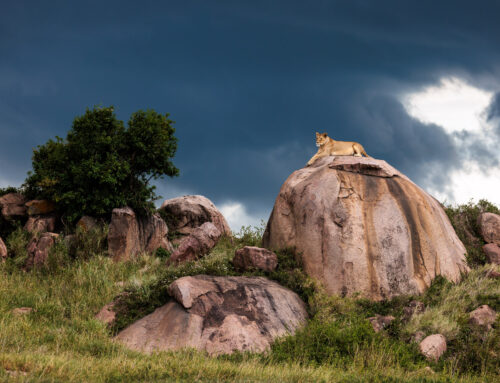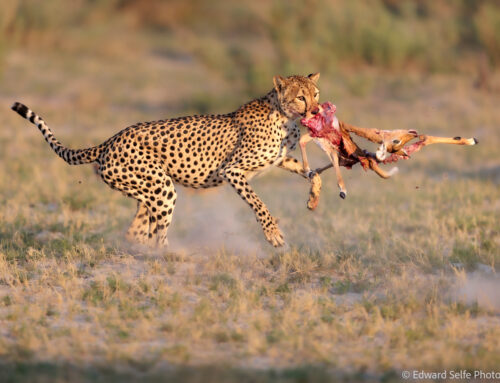I am very fortunate to have a large number of repeat guests who have travelled with me many times over the last 10 years. Choosing to visit a safari area repeatedly, when there are so many places to visit in the world, speaks volumes about the South Luangwa and the fantastic opportunities it offers. It’s always a pleasure to welcome back these repeat guests, and to know that they have loved their previous experience (and want more of it!), but I also want to make sure that each trip offers something new.
Travelling to different camps is one way to do this, but Mike White goes about it another way. He chooses to visit the same camp and enjoy the continuity of picking up where he left off, knowing that he will continue the story year to year. On the previous two trips to Zikomo Safaris, we’ve enjoyed some outstanding sightings – memorably epic sunrises and tree-climbing lions in year 1 and beautiful forest-scapes and leopard sightings in year 2 – so I wondered what Nature would have in store for us this time around. Would it be as good as his previous trips?!
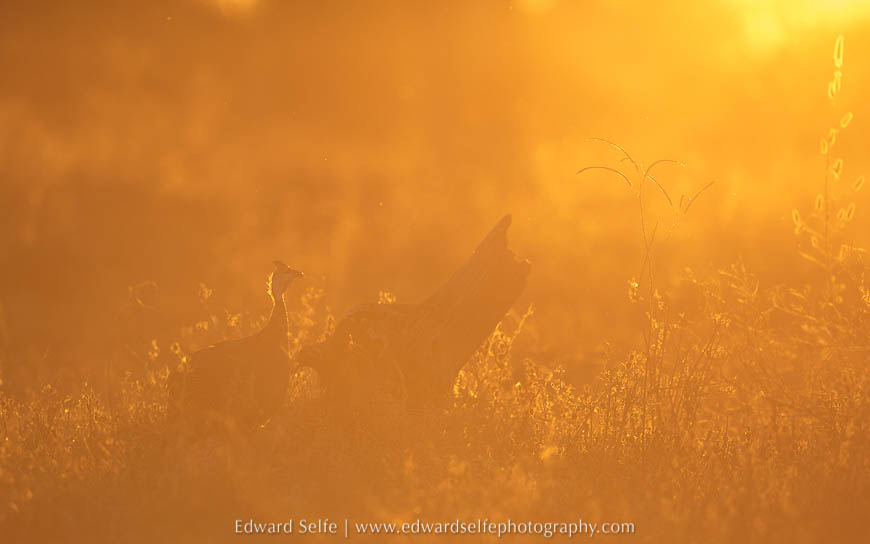
Mike wasn’t concerned; he knew that the South Luangwa would deliver something new and special, particularly over an extended stay of 7 nights. And so it has been. Our first morning started, as many do, with rich, golden sunlight over the Nsefu Sector. We enjoyed some guinea fowl in the grassland and then a flock of Great White Pelicans preening at the side of a drying lagoon. This was a new sighting for Mike so we found a low-point to park the vehicle and tried to make sense of the melee of large white bodies and yellow pouches! Choosing to get down below the level of the pelicans’ eyes helps convey the scale of these vast birds.
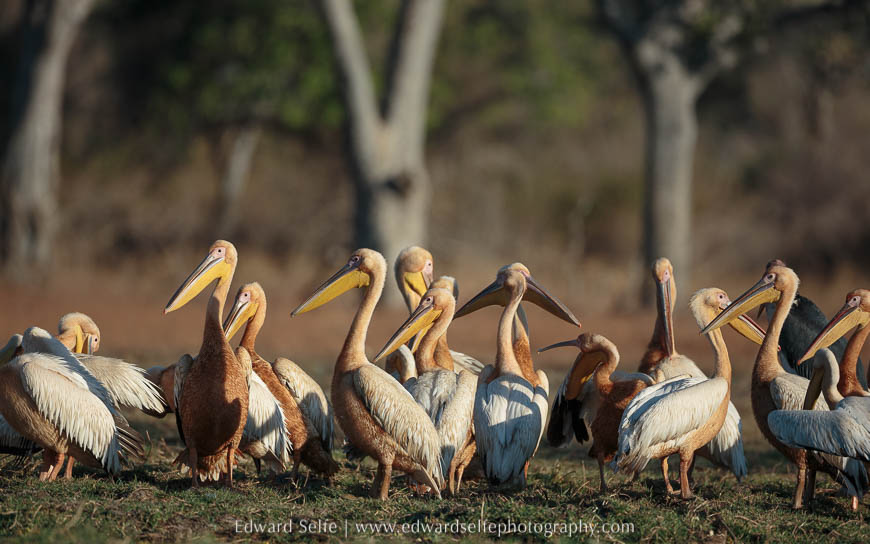
It wasn’t long after the pelicans that we found a hyaena resting near a large tree with an impala carcass swinging from the lowest branch. Seeing that there was still quite a lot of meat remaining, we scouted around and quickly found a young leopard resting nearby. Mike is very clear that he will enjoy whatever comes along but he had made one request – for a leopard in a tree – so I was pretty excited that we might achieve this on day 1!
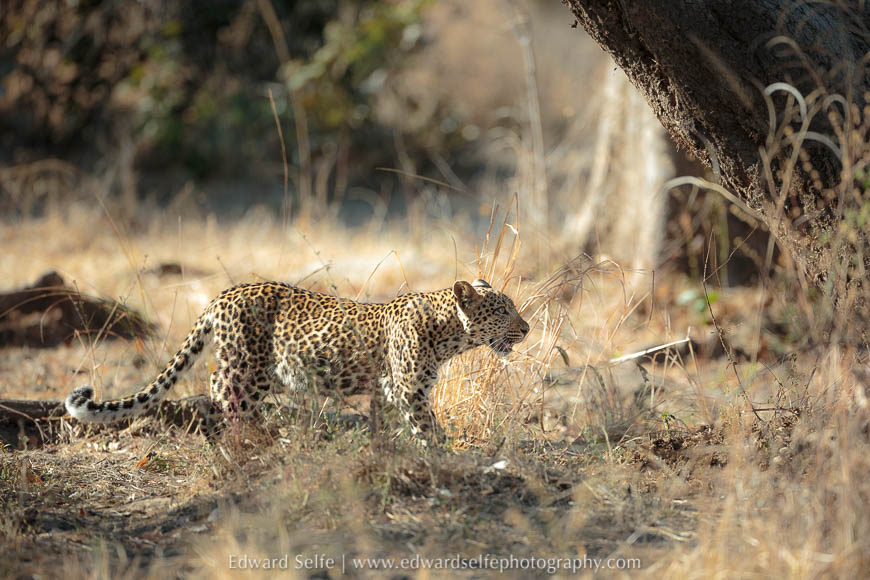
We parked up nearby and waited, lined up to photograph the leopard if (when!) he ran up the tree. The hyaena got up and approached the leopard, startling him slightly, and causing him to seek refuge at the base of the tree….but he didn’t seem keen to climb up. We assumed that the mother was nearby but perhaps even more wary of the hyaena than he was, so we kept a distance and hoped she would return and share the remaining carcass with her son. She didn’t return but, after a short wait, the youngster decided he had digested enough and clambered up the trunk to continue feeding!
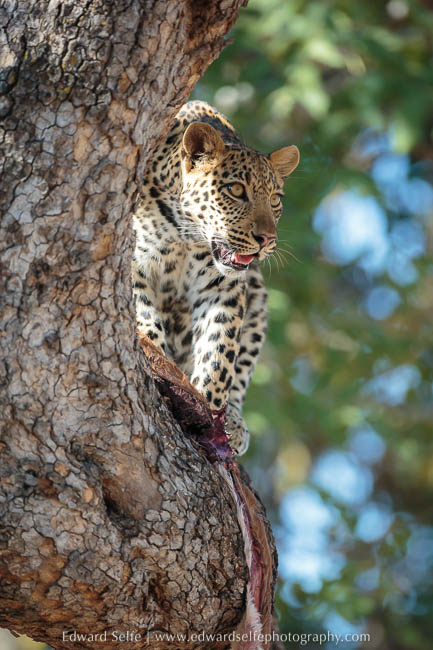
Luangwa is known for leopard sightings, but this was very special; the youngster was very calm in our presence (though we did move very slowly and carefully to avoid startling him) and the carcass was positioned on a large horizontal branch with very few obstacles to block our view. It was also a slightly cloudy day so we were able to shoot from all angles without worrying about shadows. Over the next hour, we slowly tracked his movements, changing our position as he fed on the carcass and manoeuvring to vary our angle of view and create a range of shots. We also took time to watch, discuss and simply enjoy the privilege of being in the presence of a beautiful wild leopard while it went about its day. Absolute Luangwa magic.
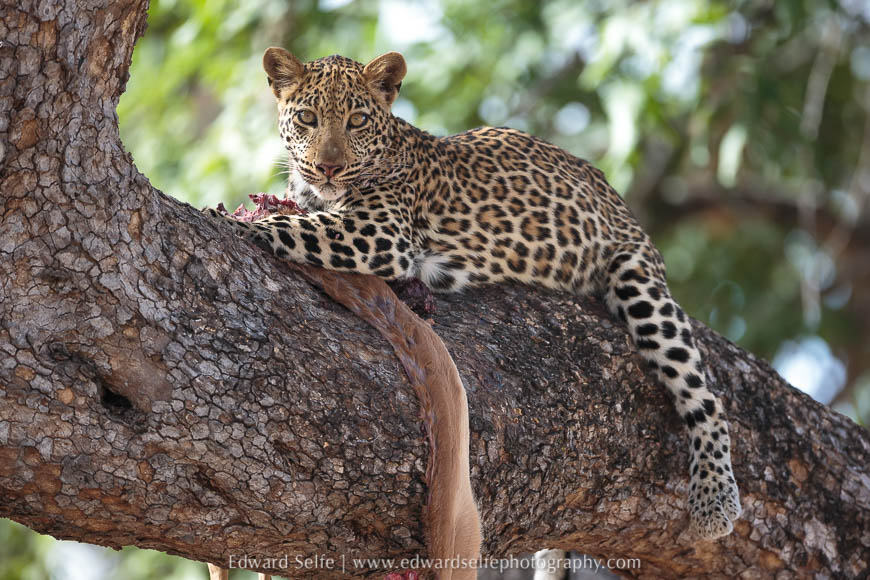
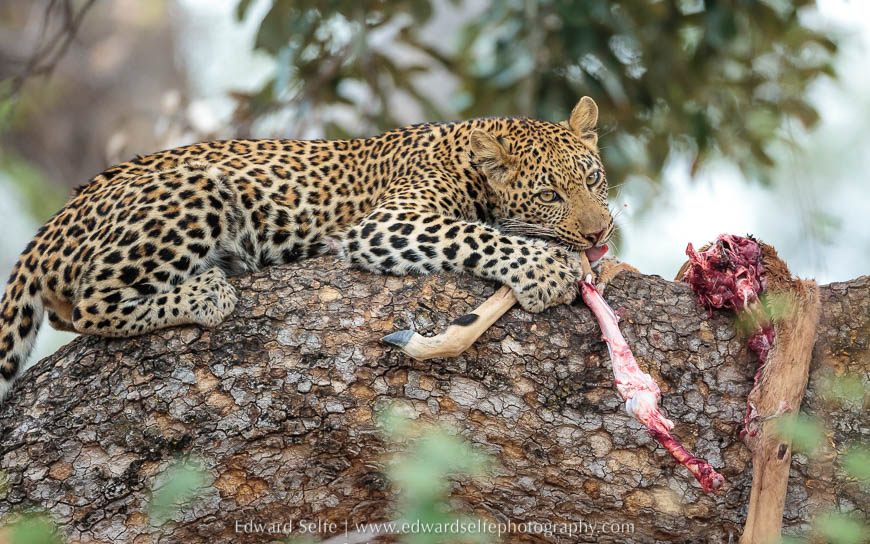
After a while he appeared to be full and climbed down the tree and wandered off into the bushes. Rather than follow and risk disturbing him, we left him in peace and went to have a very belated tea break on the river bank! It’s hard to follow such a sighting, but certainly taking a break and chatting about what has just happened is a good step; it allows the experience to settle in and for the memories to form, perhaps even before the thought of photos and image editing takes over. I always want my guests to experience a wonderful wildlife safari first and foremost and taking time to reflect on what we’ve seen – as well as what we’ve photographed – is crucial to this.
That afternoon we returned to check on the leopard and found his mother feeding on a small scrap of the carcass at the base of a tree. She didn’t offer the same photo opportunities that her son had so we moved on, keen to allow her to feed in peace if the photos would not be worth the risk of disturbing her.
Rebuilding the momentum after such a fantastic initial morning is hard, especially when sightings don’t appear so thick and fast in the afternoon. So went back to what we do best on photo safaris in the Luangwa; moving slowly through beautiful areas and looking for opportunities to create unusual images from commonplace sightings. Seeing a lone elephant heading towards Lunga Lagoon, we positioned ourselves and waited. He splashed out into the lagoon, and we saw beautiful stripes across the surface weed, caused by the shadows of large trees above.
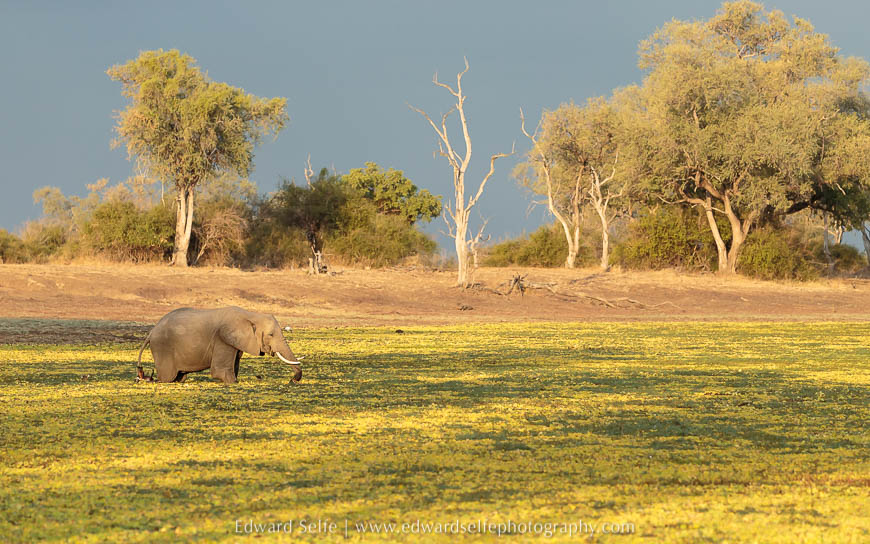
On our way back to camp that evening, we positioned ourselves for sunset on the riverbank, before returning for dinner.
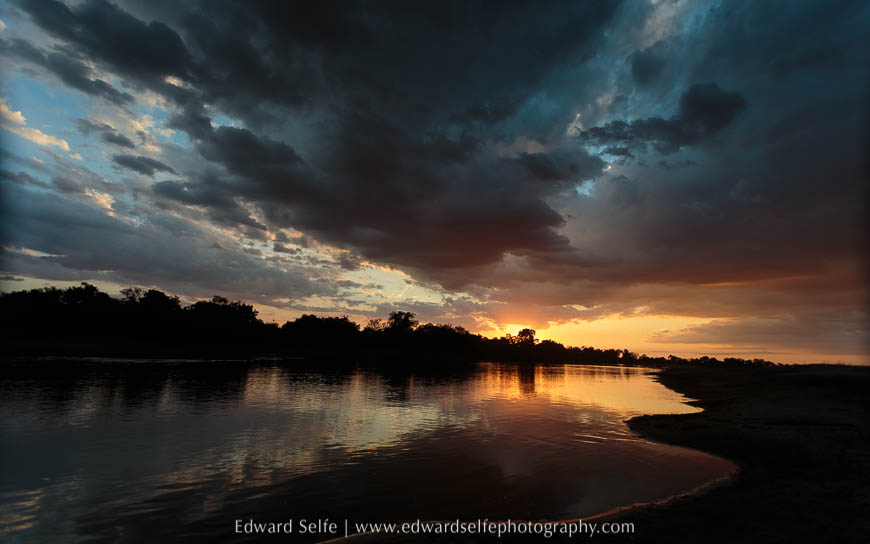
We wondered what the morning would give us, so we headed out early and listened for sounds from the bush to guide us. Very soon, we heard hyaenas chattering and followed the sounds to the island inside Lunga Lagoon. We couldn’t see what the hyaenas were calling about, but we did find two sub-adult male lions fording the lagoon to go and find out. Fortunately for us, they changed their minds mid-way across – perhaps fearing the deep water – and returned to our bank, allowing us to take photos as they approached us. They then rushed around the end of the lagoon and challenged the hyaenas in a deafening battle. We found out later that an elephant had died so that guaranteed activity in that area for several days after!
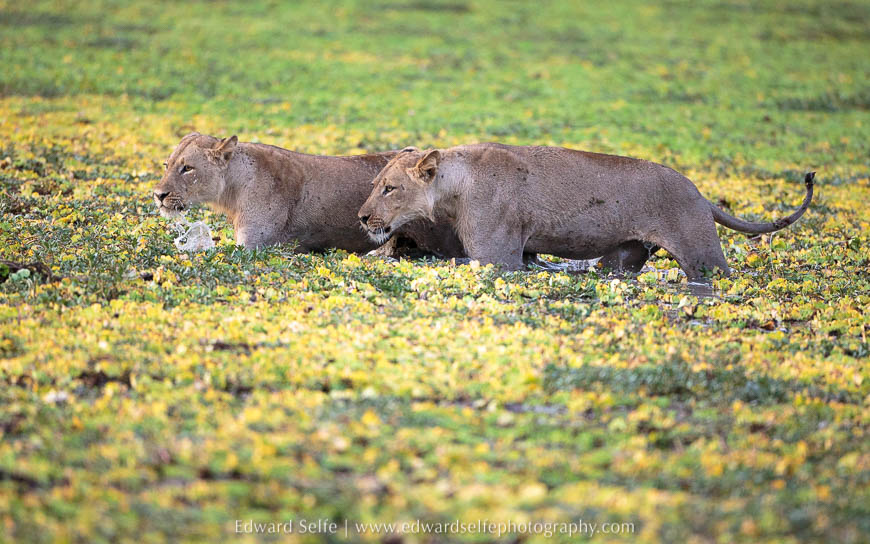
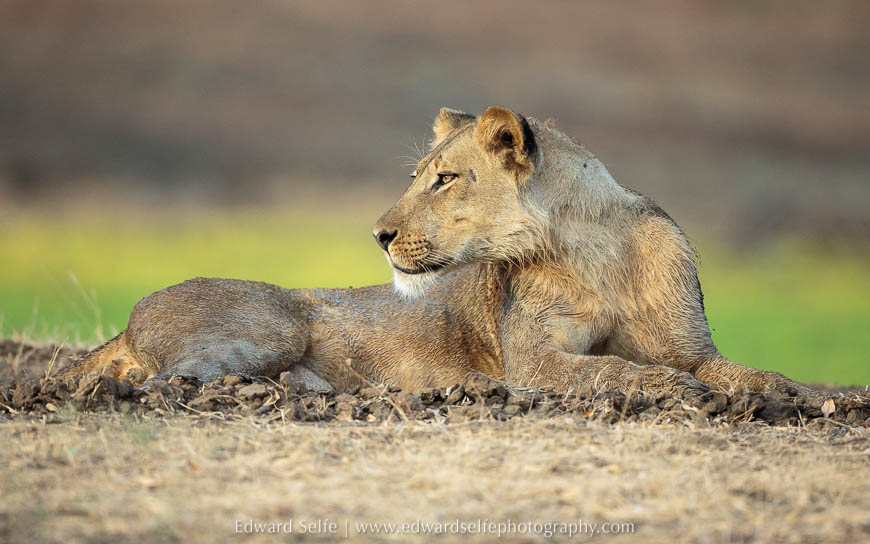
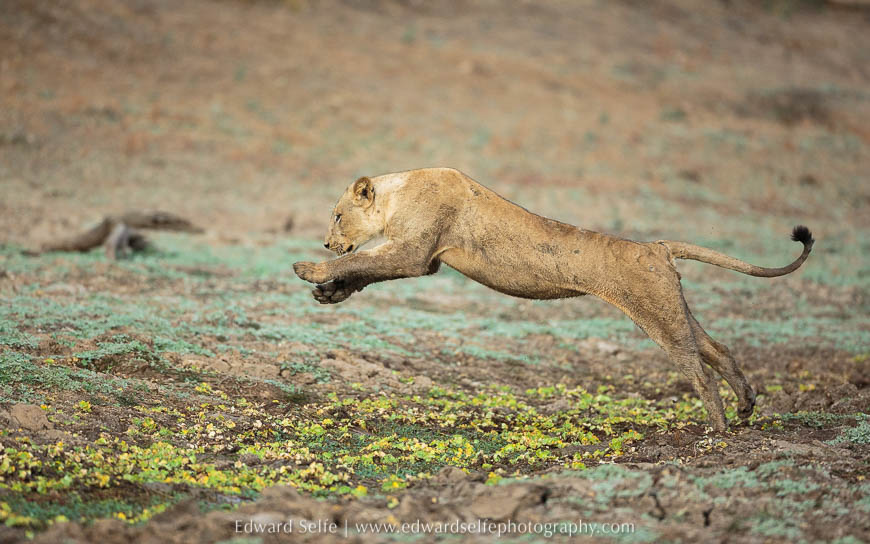
It was a bit cloudy that day, so we were able to stay out later and enjoy the soft light. We spent some time with a herd of giraffes, waiting for moments of interaction between the adults and the 3 calves.
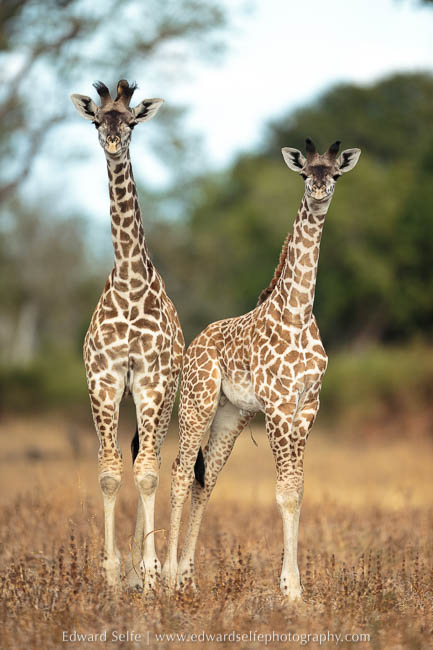
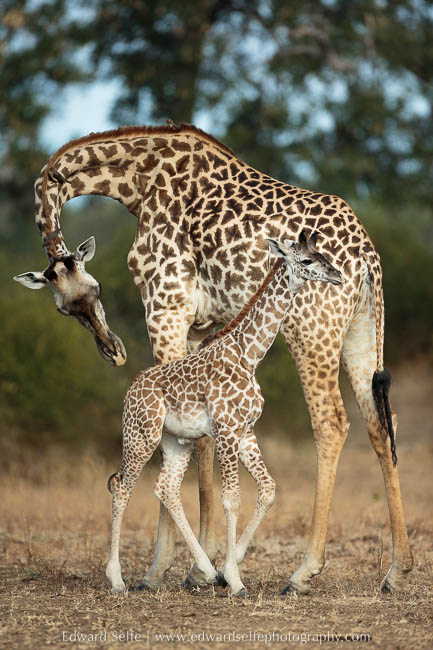
We gave the afternoon to a herd of elephants who tried to cross the river, but didn’t find a way to get out on the other side, so returned to the far bank. The light was bright, but Mike had not seen an elephant river crossing before, so we simply enjoyed the view and took some shots occasionally. In fact, as they climbed out of the far bank, Mike framed some great images which I hope will appear in his trip report soon. We were, once again, treated to a great sunset along the river, before returning to camp. With such great sightings available in the daylight, and all the challenges that night-time photography presents, we often return to camp after sunset, spotlighting as we go.
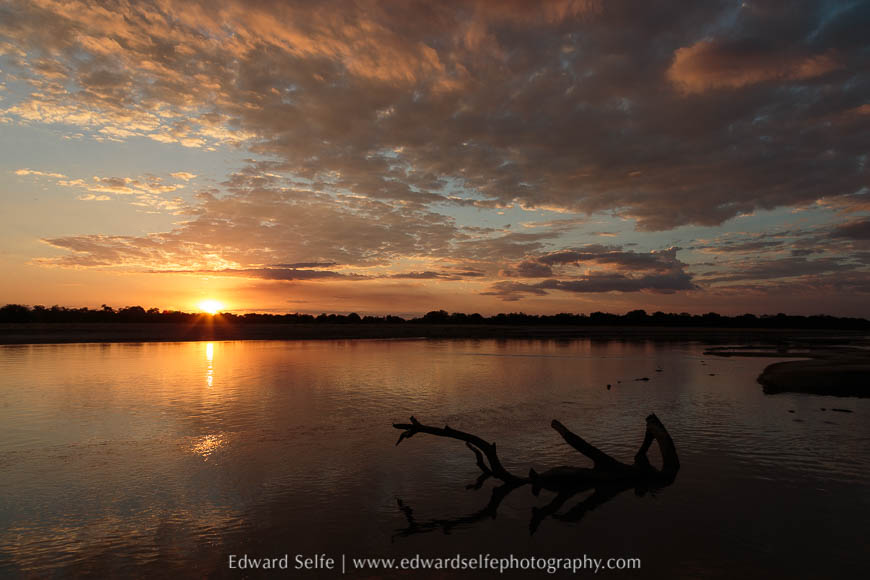
We decided to head further north the following morning, on the chance of finding a pack of wild dogs which had been seen there the previous day. Just outside the camp, while it was still dark, we found a leopard with two 5-6 month old cubs. She was very shy and actually growled at us as we passed her, so I decided not to follow her and to give her space. We want our leopard cubs to grow up comfortable with vehicles and people, so we have to think very carefully how we move around them when they are small. From there, we took the road near the elephant carcass, and found that a male lion and a very nervous lioness had been attracted to the smell. We had little luck photographing the pair since the female kept moving away, so we waited until they navigated round the side of the lagoon and challenged the incumbent young males on the carcass. There was a lot of noise – including big calls and lots of snarling – so we knew that the young males had been kicked off the carcass!
We continued north, but we had lost some time with the lions so the light was beginning to get bright. We simply enjoyed the journey, watching elephants, birds, baboons and antelopes along the way. A group of kudu at the water’s edge gave us some excellent photos. Throughout, I offered small pointers and advice to Mike, covering everything from composition to minimum shutter speeds and framing suggestions – I try to keep my advice brief and to-the-point since I know that guests are preoccupied with the scene in front of them. But regular, selected reminders and ideas are useful and I was very pleased to see the images appearing on Mike’s camera!
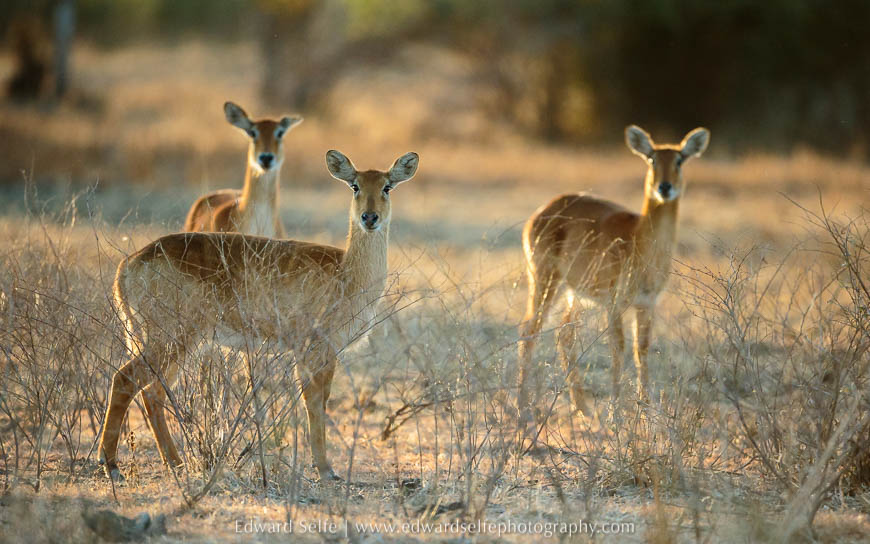
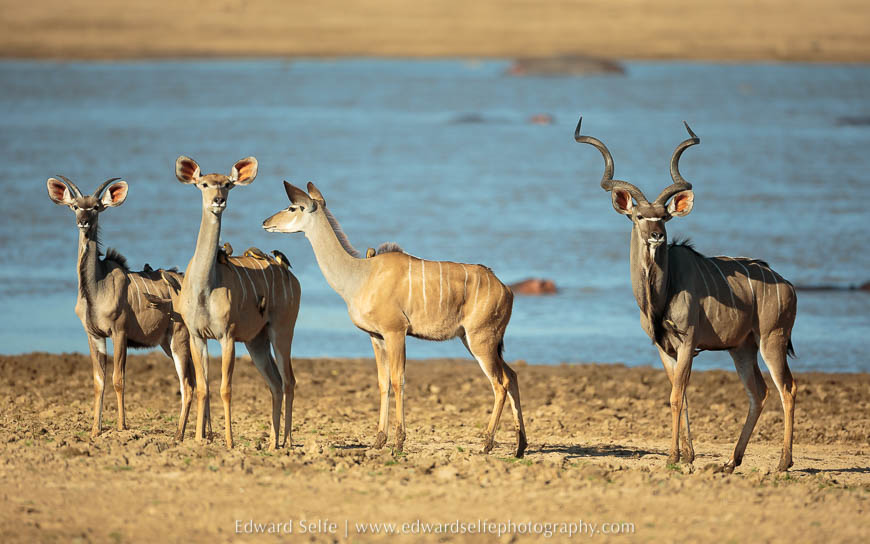
That afternoon was perhaps the best of the trip so far. We started off in the ebony forests, but soon moved out in the munga woodland along the lagoons. While we were photographing impalas and a lilac-breasted roller, I heard a monkey calling in the distance; we headed straight to the site, gently closing in on the thickets where the monkey was focused.
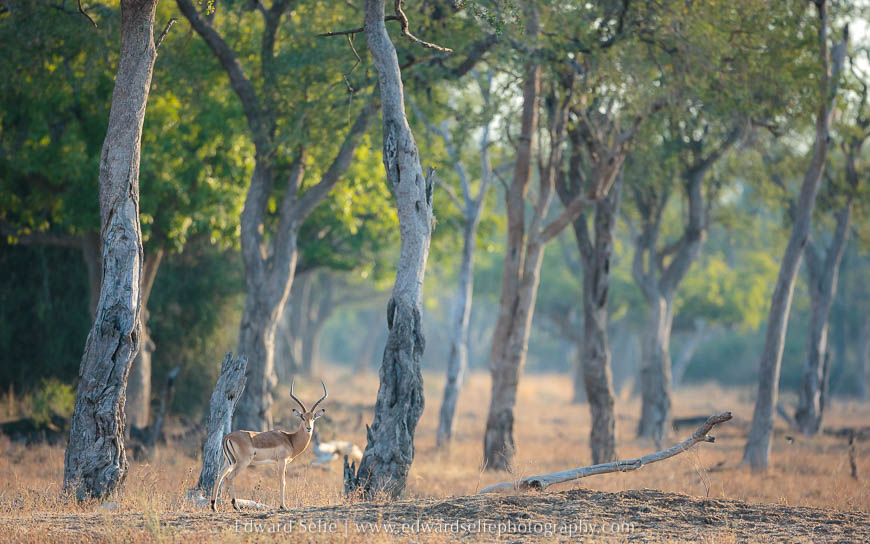
It didn’t take us long to locate a young leopard who had been for a drink at the lagoon and alarmed the monkey. We moved slowly around him, giving him space and he rewarded us with an hour’s amazing viewing. First he lounged on the ground, licking his paws, the he hopped into a low tree, and finally climbed right up into the branches of a large leadwood tree – what a star! Eventually, he came down once again, and paused on a low fork to allow us some “blue-hour” photos….at a very high ISO! Mike was exhilarated by an hour’s private viewing of a leopard doing what it does best, and I was thrilled to see the images that he had created with a very few gentle pointers from me.
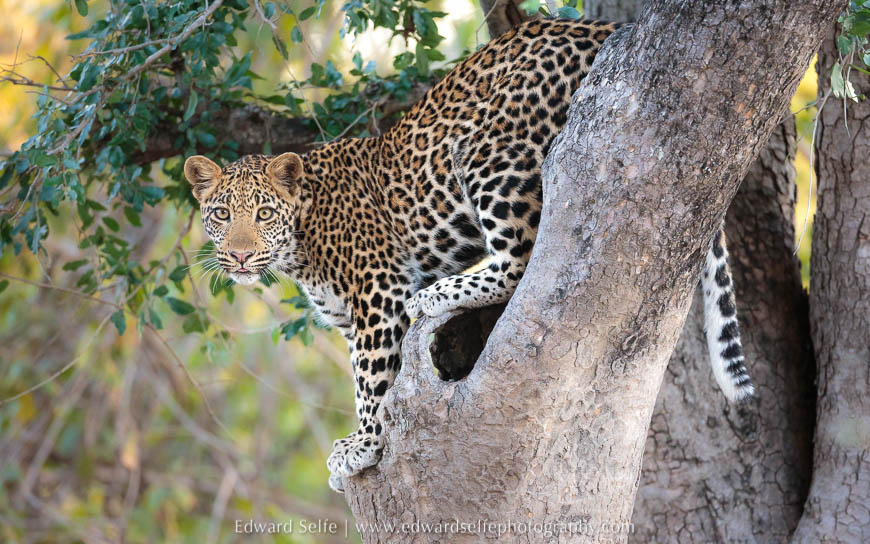
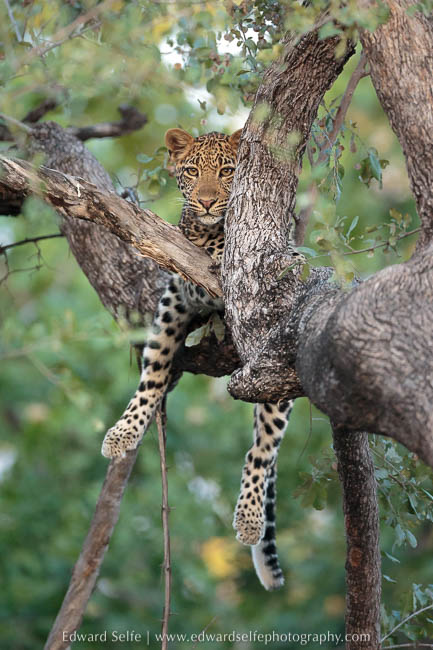
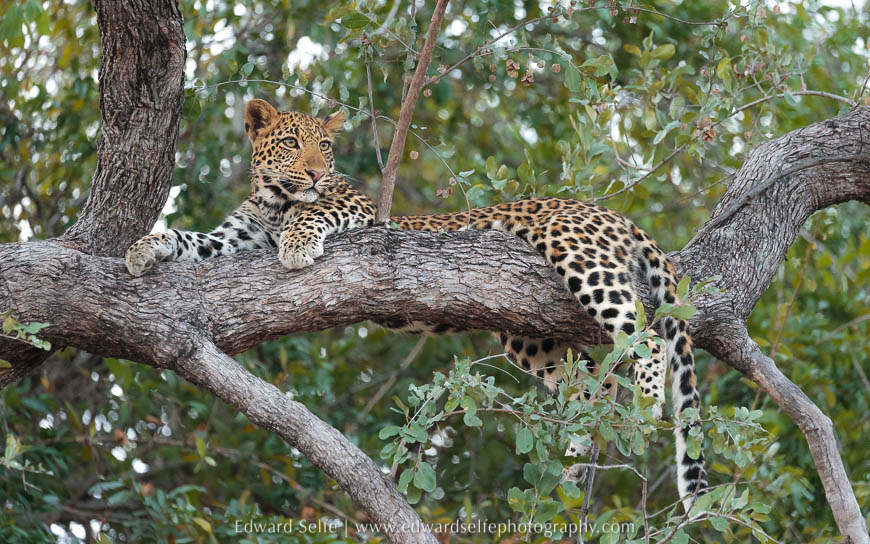
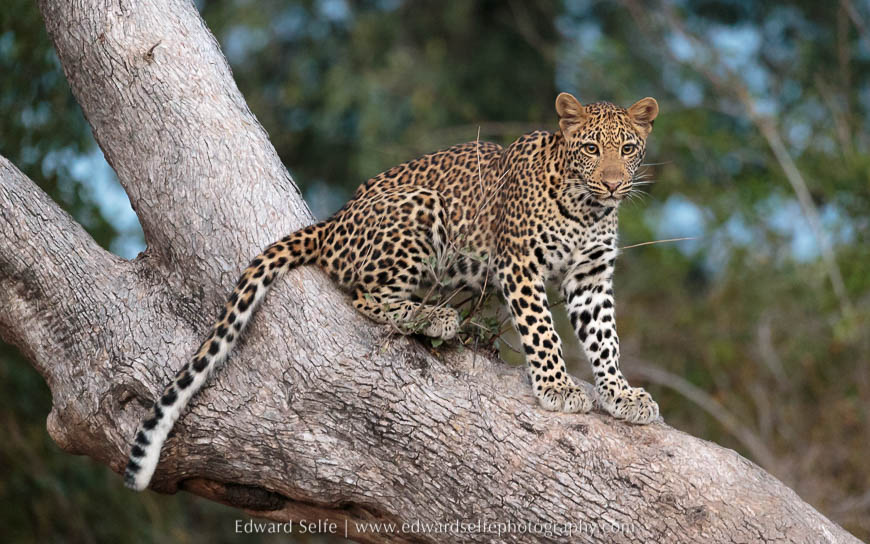
I really felt that our luck might have run out by this point, since we’d already exceeded all Mike’s hopes and expectations, but nevertheless we left camp optimistically the following morning. As the light was coming up, impalas started snorting madly on the plains near mwana Lunga lagoon, and I knew that a leopard was nearby. We approached and were just in time to find a different female with two very young cubs disappearing in between the thickets. No photos this time, but we enjoyed watching with binoculars as they bounced off through the bushes. Clearly the Nsefu Sector’s leopard population is in good shape!
As we left the leopard situation, I spotted a hyaena roaming across the plain heading back to their den. This is unremarkable, since they move across that area daily, but it appeared to be carrying something long in its mouth. Suspecting the remains of an impala leg, stolen from a leopard perhaps, I drove quickly over and positioned us in its path. We were astonished to find that the hyaena was carrying the tail from the elephant carcass that we had been visiting over the last couple of days! While it is never a pleasure to know that an elephant has died, all animals must meet their end at some stage, and it was fun to make interesting images of this hyaena with such an identifiable prize in its mouth! We spent the rest of the morning looking for interesting light – which we found with some baboons – and enjoying Luangwa’s views. Returning to camp, we found a large male lion resting along a gulley, but the light was bright by this point so we noted his location with a plan to return in the afternoon.
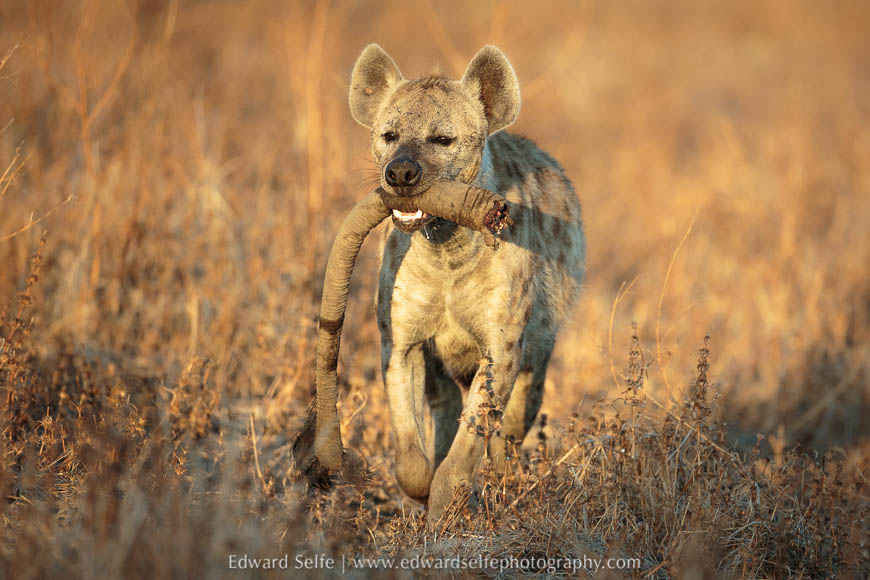
The afternoon was quieter, not surprisingly given the previous days, and we searched for sightings in new areas. As the sun started setting, I spotted an opportunity for a long-lens landscape with a beautiful sausage tree and some puku antelope. We spent 30 minutes with this scene, listening for alarm calls nearby and framing different shots as the puku fed underneath. The benefit of having at least a week on safari is that you have time to absorb these quieter days, and enjoy photographing a variety of scenes and species without feeling that you must “move on” to something else. The pursuit of “something else” often means that you don’t stop often enough and we fail to hear the sounds that lead us to the headline sightings. I’d certainly recommend that photographers plan for at least a week in this area to get the very best experience, and have the time to enjoy it.
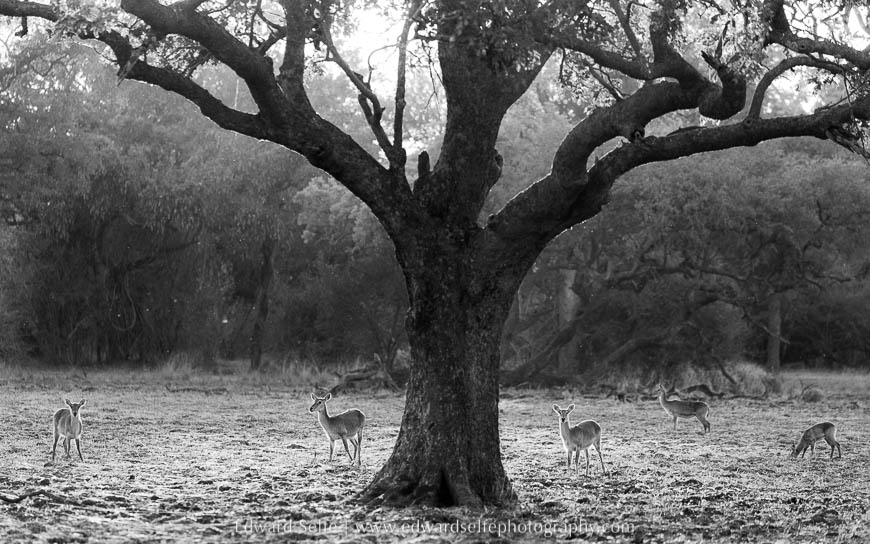
On morning 5, we planned to head out along the Kauluzi stream and find the lions, who we hoped would call and give away their position. As is always the case in the bush, plans meet with Nature and fall apart. We stopped at a likely spot to listen for calls and I spotted antelope running towards us; baboons began to bark and I knew that only one thing could be responsible. Within seconds, 14 wild dogs appeared and ran all around us. As usual, they were followed by hyaenas and the dogs took great pleasure in terrorising them when they got too close. At this stage, the sun had not yet risen so the light was very poor and we didn’t want to add the spotlight to the scene, so we set high ISOs and did the best we could!
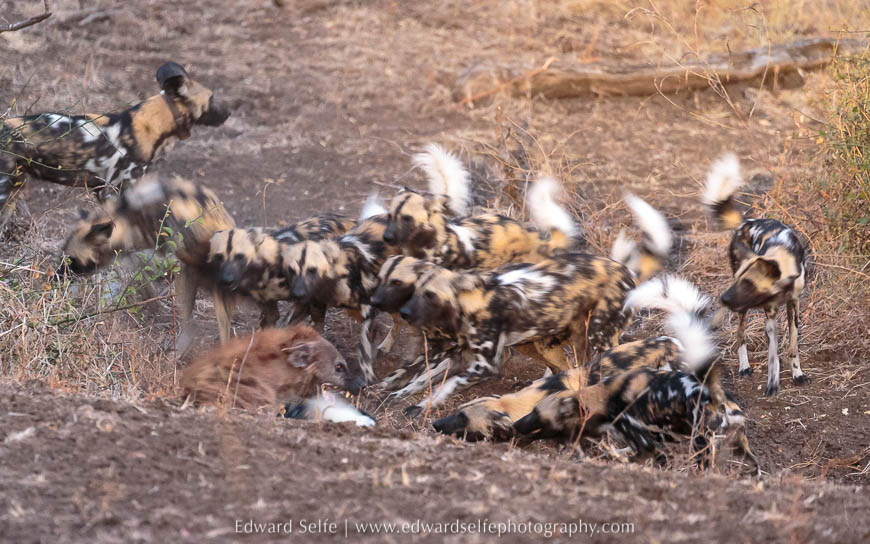
I hoped that we would be able to follow the dogs as they socialised and eventually started hunting. But dogs move so fast, that I knew there was a chance we would lose them before they made a kill. So I moved us around them, setting up a variety of shots as the light improved. Little did I know that this was barely necessary. After running along the road for 500m, they spotted some nearby impalas and started to fan out. After a short stalk, they gave chase and quickly brought down a large impala ram. The rest of the pack swarmed in and began to feed. It was a wonderful show of agility and efficiency, but there was an element of savagery as we considered the impala’s demise. However, there was little time to be sentimental as we manoeuvred to find a clear view of the feeding dogs in the long grass.
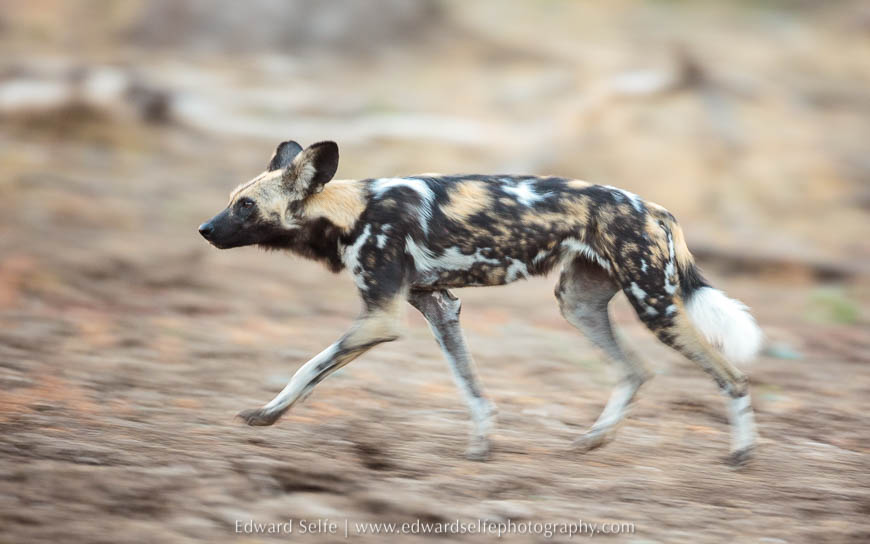
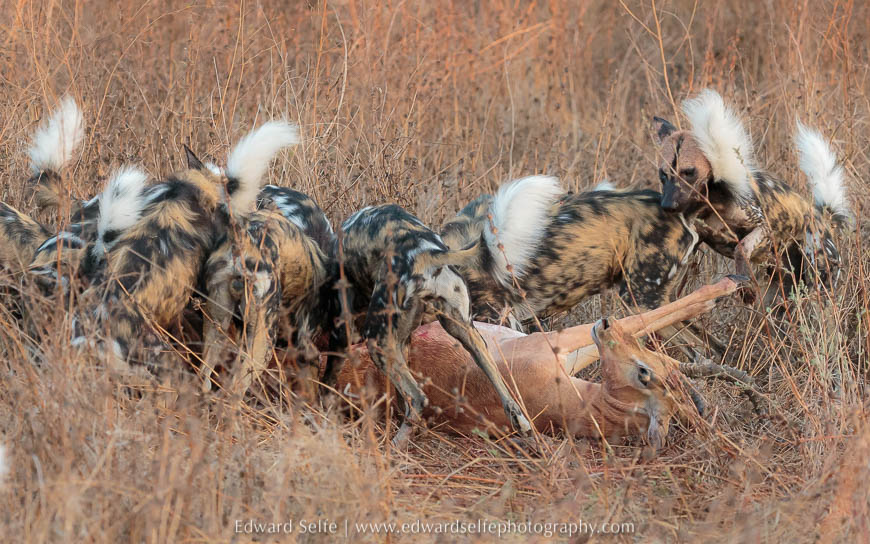
It was wonderful to watch, but it was tricky photography as the dogs had killed the impala in long grass and shrubs. After we’d talked about how to get the best shots in the situation, Mike said, “That’s enough photos, I think I’ll just watch”. This was a very sensible point of view and we both watched as the pack interacted and fed. We were the only vehicle present – as we had been for all but one sighting in the whole week – so we enjoyed over an hour of wild dogs privately to ourselves.
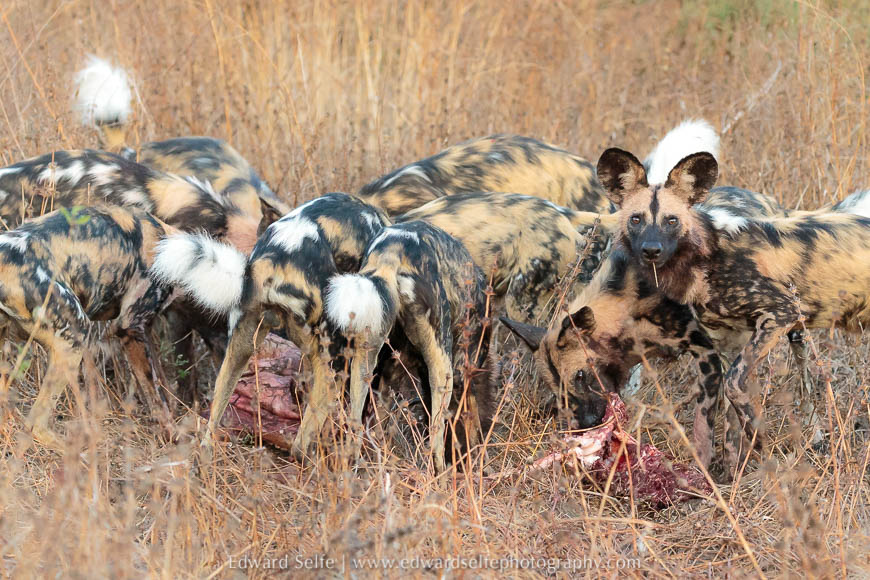
As the pack started to split up the carcass, we were able to take close ups of individual dogs with impala parts through the long grass. Slowly the dogs left the remains and wandered off to rest in the shade. We positioned ourselves to take shots as they approached us. After nearly 2 hours with the dogs, we moved off to have a tea break and reflect on the fortune that we had enjoyed that morning.
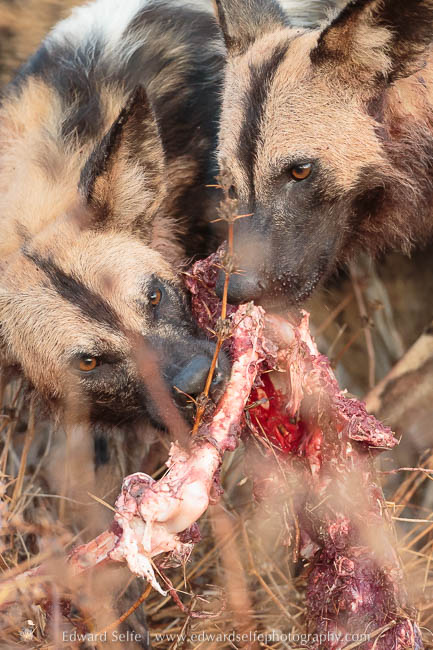
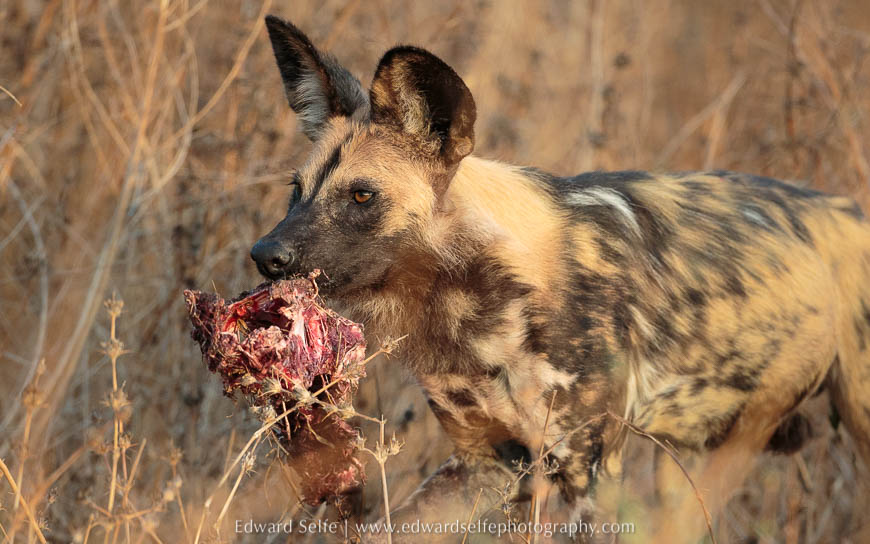
With just two days to go, we talked about how this safari week had been so different from the last 2. Previously, we had enjoyed fewer large carnivore sightings (though there had still been several) but we’d had far more scenics and animal-scapes. It was interesting to see how the weeks had been different from each other, and it reinforced Mike’s view that revisiting a safari area that you know to be excellent will continue to give new and interesting sightings.
We hoped that the dogs would be active again in the afternoon because they had shared only one impala between 14 dogs, so we headed back to meet up with them as the light dropped in the afternoon. However, they had other plans, and they did very little until almost sun set, when they rose, yawned, got up and began to move slowly across the broken ground. This was the first time that things had not gone as well as we had hoped this week – which is remarkable – so we were content to leave the dogs to hunt in the growing dark and head for camp.
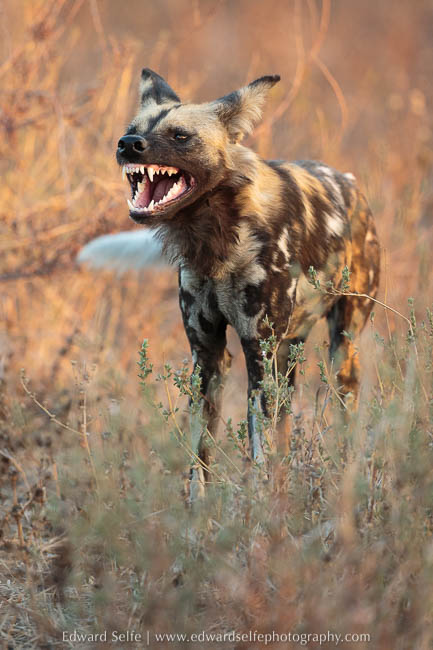
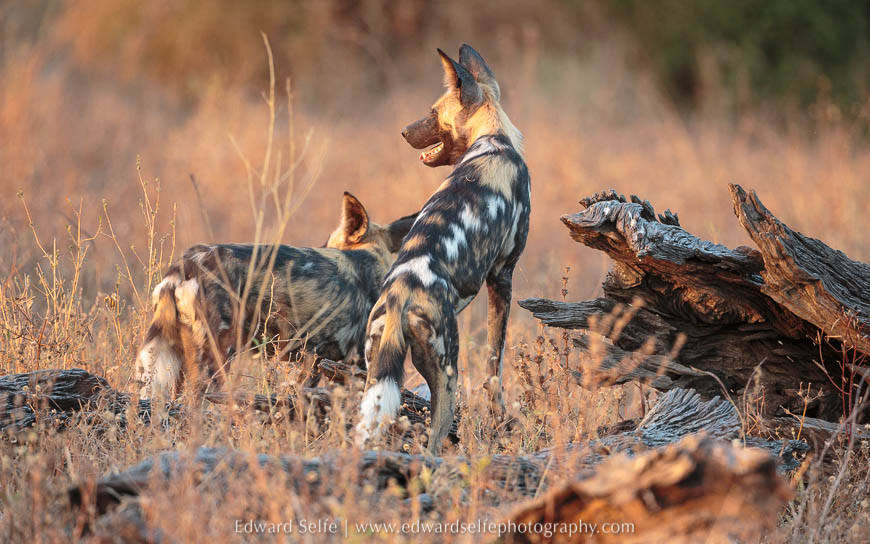
Our penultimate morning was going slowly – though we did track down a leopard briefly by following the calls of irate squirrels – until we found the dogs again quite late on in the drive! They were resting on the edge of a deep gulley so we were able to position in the bottom of the trench and get below them which gave us some fun photos from a great angle. While it was not as exciting as the previous morning’s viewing, the angle of view was miles better without the thick grass.
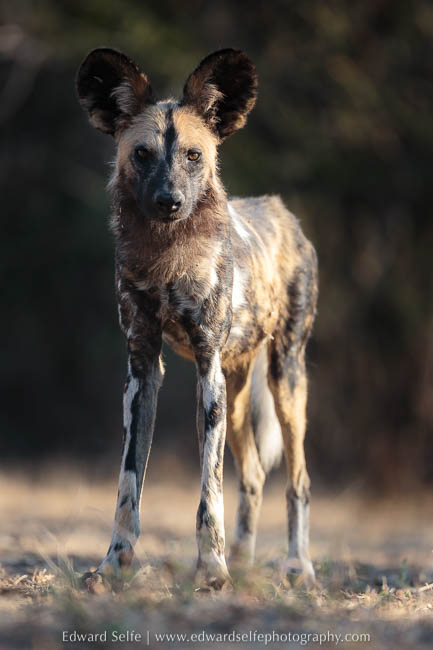
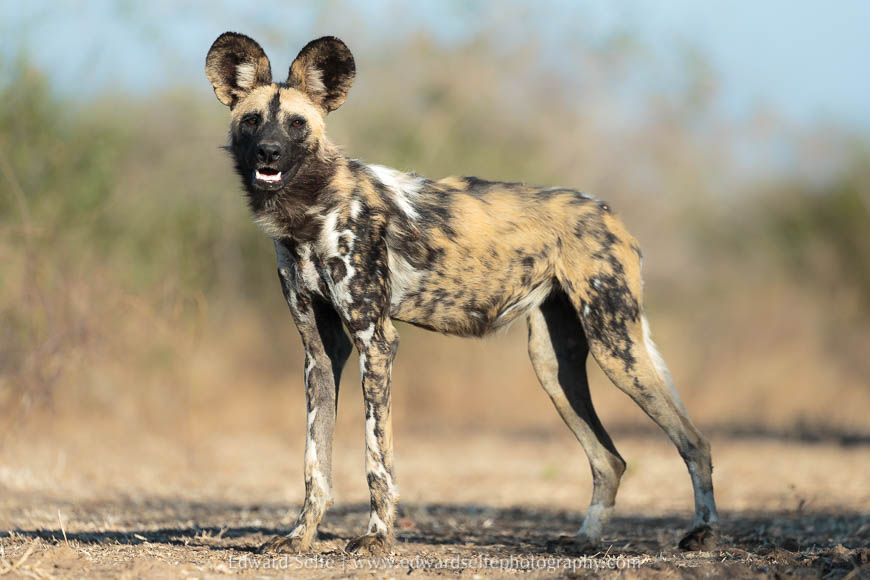
The light on the final afternoon was spectacular, and we knew that a clear sky would follow. So we headed to the riverbank and quickly found a trio of giraffes. I wanted to work with Mike on some abstracts and chat about creative use of depth of field and giraffes out in the open were a good subject for this. After some initial challenges (where they all stood awkwardly and far too far apart!) they moved together and we enjoyed an amusing 30 minutes playing with different arrangements.
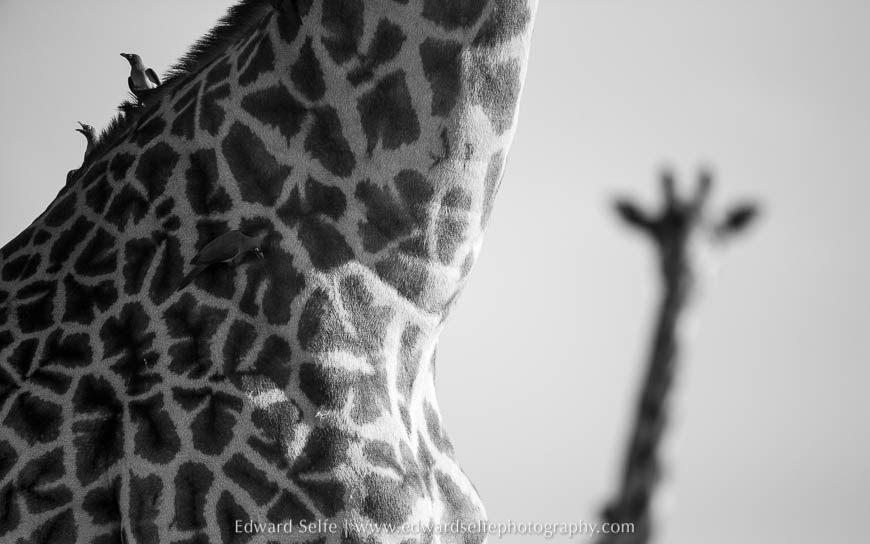
As the light dropped, we moved to the ebony grove (Mike’s favourite place) and enjoyed a wonderful elephant situation and then waited for the baboons to return to roost. There were lots of options here, the best of which turned out to be a bushbuck that walked into a lovely tunnel of backlit gold. Sadly a baboon photo-bombed my image, but Mike’s was much better!
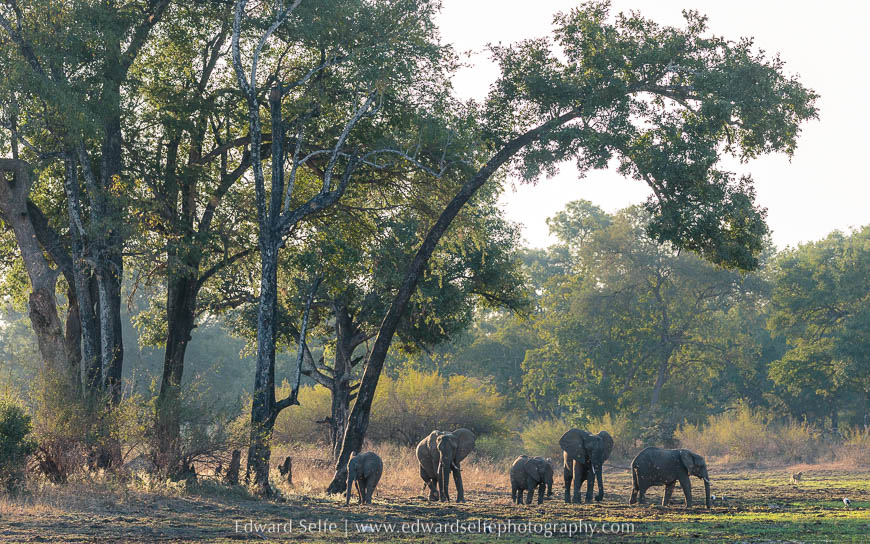
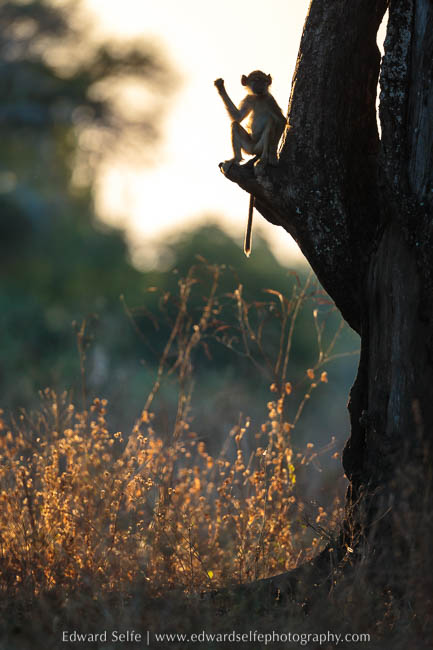
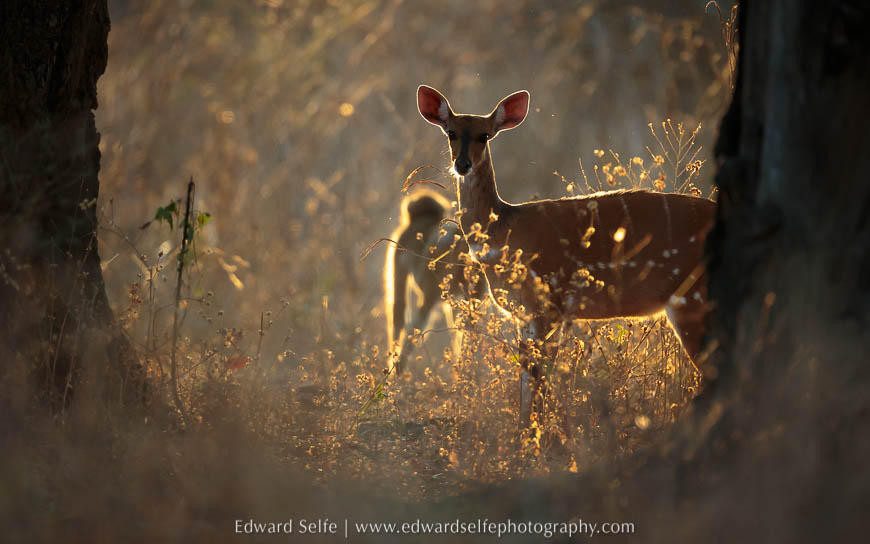
Luangwa couldn’t allow us to leave without one more treat; as we left the grove, we found a leopard nearby, resting at the base of a sausage tree. It didn’t move much but we were able to get some nice images as it watched us and the flocks of geese crossing overhead on their way to roost.
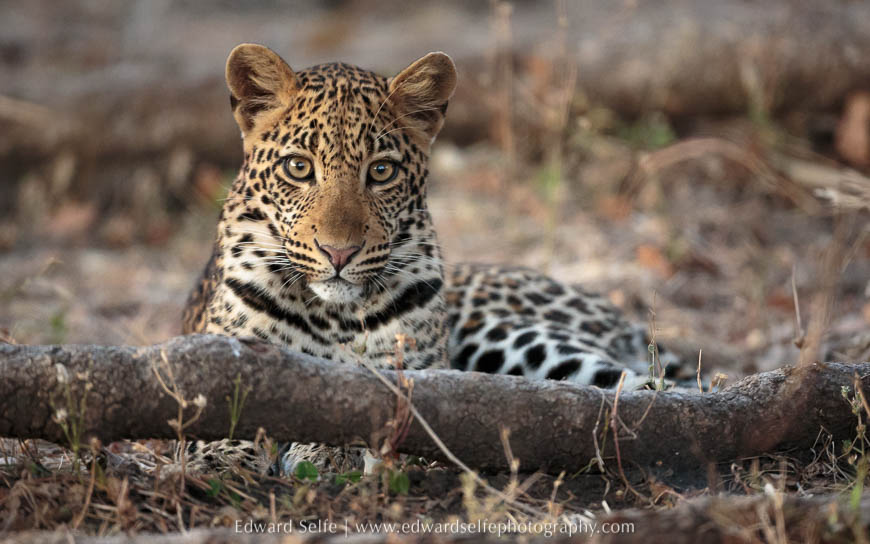
Our final morning turned out to be a quiet one, with only some beautiful elephant sightings on the plains to keep us busy. I’d always prefer to end with a bang, but after the week we have had, I think Nature was simply saying “Enough, Mr White, enough.”
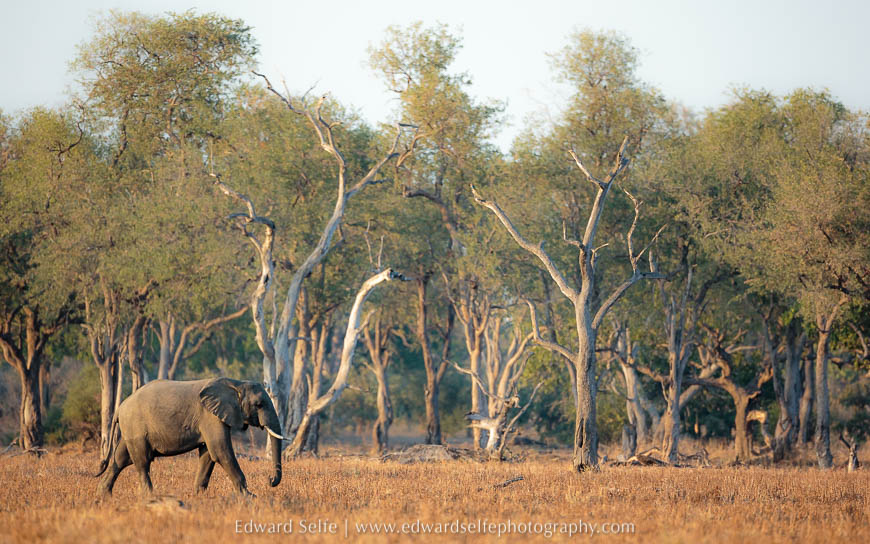
This week proved a number of things; it’s always worth returning to a good safari area as one week will be very different from the last; it’s also valuable to have an extended time in a camp so that you find the rhythm of the area and learn the movements of individual animals and groups; and taking time to look at the smaller things always reveals the headliners. Mike knows all this from his 3 weeks here, and I was delighted to see the quality of the images that he was taking during the week. He has offered to write a report of the week, which I will gladly publish here, so check back in due course for the safari from Zikomo Camp in his words.
I leave for Nsefu Camp on Monday for 4 nights, followed by 4 nights at Lion Camp and 4 nights at Chindeni bush camp. I’ll be offline for some time, but look forward to catching up on the other side! Thank you for reading – I appreciate your time and support.

